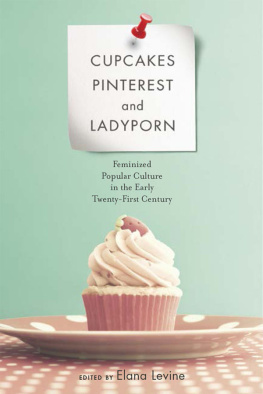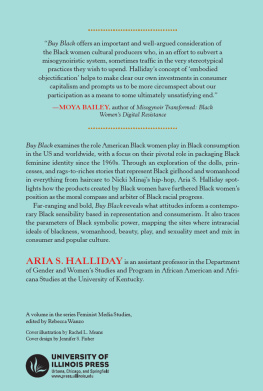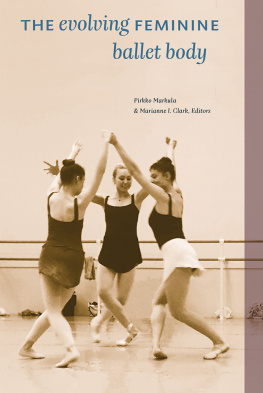My greatest appreciation goes to this volume's contributors, who were not only willing to share their impressive research but were prompt, responsive, and always pleasurable to work with. Thanks also to Ron Becker and Michael Z. Newman, important sounding boards for me as I developed this project, and to Rick Popp, for his engaged inquiries about its progress. Carol Stabile was such an enthusiastic supporter; I'm honored to be included in the Feminist Media Studies series she edits. I am grateful to the anonymous manuscript readers who advised the contributors and me in making this book as strong as possible. Larin McLaughlin, Dawn Durante, and Amanda Wicks were helpful and supportive in their editorial duties at the press. Thanks to all of the above for helping to make my vision of this project such an exciting reality.
Association of American University Presses.
CHAPTER 1
Fifty Shades of Postfeminism
Contextualizing Readers Reflections on the Erotic Romance Series
MELISSA A. CLICK
The Fifty Shades of Grey (Fifty Shades) book series has dominated best-seller lists and sold more than 70 million copies worldwide since Vintage Books, a division of Random House, published the series in April 2012. The series unusual path to print and the bestseller list has raised questions about possible new models for the ailing publishing industrybut it is the series content that has drawn the most attention.
Fifty Shades chronicles the love affair between inexperienced and naive virgin Anastasia (Ana) Steele, a 21-year-old college student, and Christian Grey, a wealthy entrepreneur in his late twenties whose BDSM (bondage, discipline,
In response to Roiphe's suggestions, I argue that to understand Fifty Shades popularity, it is necessary to understand the postfeminist environment in which early-twenty-first-century western women live. Angela McRobbie describes postfeminism as a process by which feminist gains of the 1970s and 1980s are actively and relentlessly undermined. Susan Douglas also explores the sexualization of media culture and suggests that media texts like Cosmopolitan and Sex and the City, and music videos produced by sexualized celebrities like Britney Spears, teach
that it is precisely through women's calculated deployment of their faces, bodies, attire, and sexuality that they gain and enjoy true powerpower that is fun, that men will not resent, and indeed will embrace. True power
The impact of this postfeminist sexualized media culture on everyday attitudes and behaviors has also been chronicled in more mainstream venues, like Kathleen Bogle's Hooking Up and Carmine Sarracino and Kevin Scott's The Porning of America. Both demonstrate that the sexual environment has been changing in the late twentieth and early twenty-first centuries, and that women have had to adjust to new sexual standards and expectations.
It is in the context of this postfeminist sexualized culture that I examine the meaning of Fifty Shades of Grey to the women who read it. Like the Twilight series upon which it is based, Fifty Shades has resonated deeply with readers around the world, and although the popular press has endlessly ruminated about the meaning of the series popularity, no study has yet explored what Fifty Shades means to readers. To investigate Fifty Shades appeal, I interviewed 36 readers and grounded their reflections with feminist media research that explores women's use of romance reading. In the process, I explore the series messages about gender roles, romance, and sexuality, bringing crucial attention to the cultural and social aspects of the Fifty Shades phenomenon. Overall, I argue Fifty Shades appeal is rooted in women's use of the series recurrent themes of fantasy, romance, and sex to make sense of the sexualized cultural environment in which they are immersed.
Understanding Romance Reading
Although more has been written on the content of romance novels than on the people who read them, scholarship on romance readers has been a foundational component of feminist cultural studies. Radway's study also demonstrated that women enjoy reading romances because the act of reading allowed them a quiet time and space away from their families to relax, escape, and recuperate from the demands of their daily lives.
Although Radway's work on romance readers has been critiqued, her study usefully complicated previous feminist work that, primarily through textual analysis, disdained romance reading for its assumedly negative impact on the women who enjoyed it. Radway refuses to offer a decisive conclusion about the role of romance reading in women's lives; instead, she suggests that there are competing forces at play in the meaning of the act of reading romances (which she understands to be somewhat resistive of patriarchy) and the meaning of the texts (which she asserts uphold patriarchal values).
In her work on readers of erotic romances, The Romance Revolution, Carol Thurston is more celebratory of the impact of women's romance reading. Thurston's work, which traces the emergence of the erotic romance genre in the United States between 1972 and 1982, is based upon a content analysis of more than 100 romance novels and 600 surveys with erotic romance readers in 1982 and 1985.feminist-influenced, if not fully feminist, practice that engages messages about women's sexual freedom and packages them into a romantic story.
Although the sexual nature of erotic romance is at the forefront of Thurston's analysis, her work on erotic romance aligns in many ways with Radway's work on romance readers. For example, like Radway, Thurston found that erotic romance readers primarily read for entertainment. Thurston also found that erotic romance readers consciously used the novels female heroines to [try] out their own ideas about interacting with the hero and [resolve] conflict, free of the constraints of dangers of the real world. Thus, erotic romances, like romances generally, allow readers to imagine how they would navigate the situations in which the novels heroines find themselves.
In contrast to Radway's insistence that the practice and the content of romance reading are at odds with each other, Thurston emphasizes the significant cultural contributions of the empowering messages about sexuality in erotic romances. In particular, Thurston demonstrates the importance of the novels impact on readers sexual practices by highlighting readers reports of using erotic romances for sexual information and ideas, to create a receptive-to-sex frame of mind, and even to achieve arousal. Although Thurston is more celebratory of romance reading than Radway, her insistence that erotic romances can have positive impact on readers lives is an assertion that, in conjunction with Radway's findings, can offer support to the present examination of







